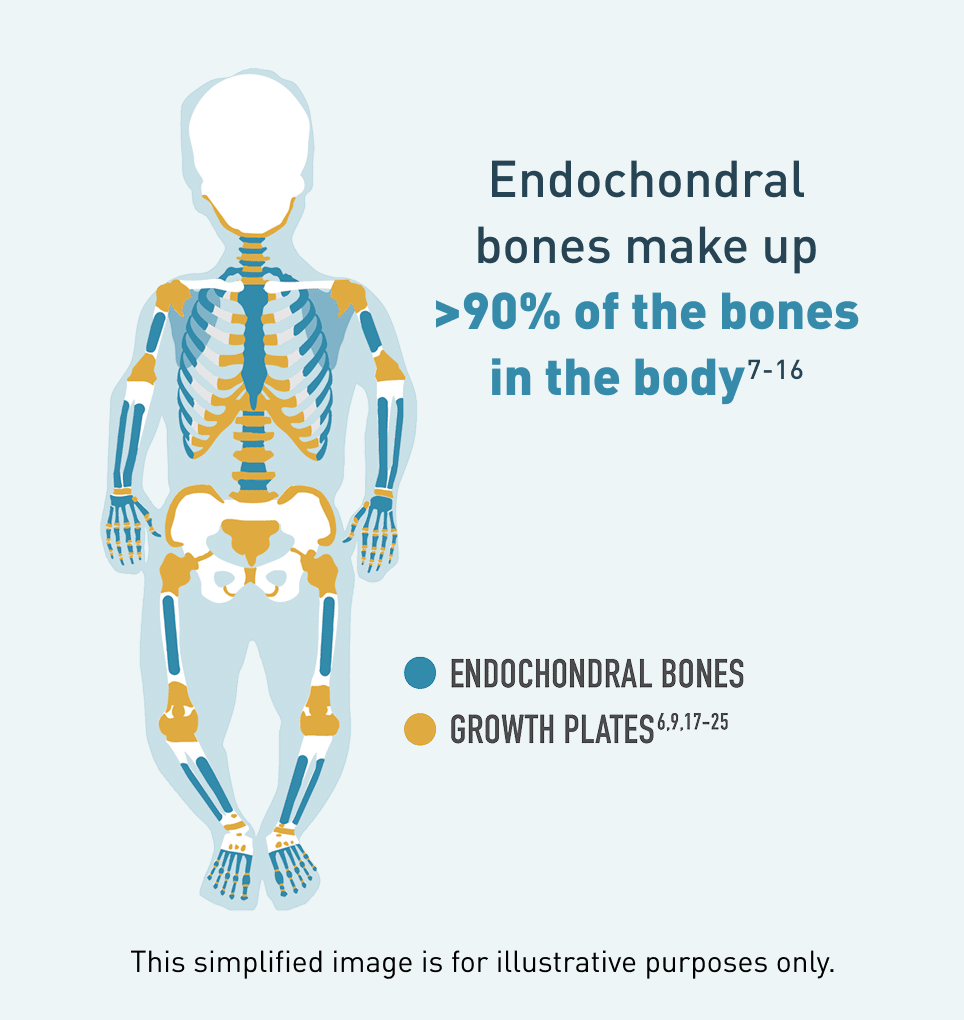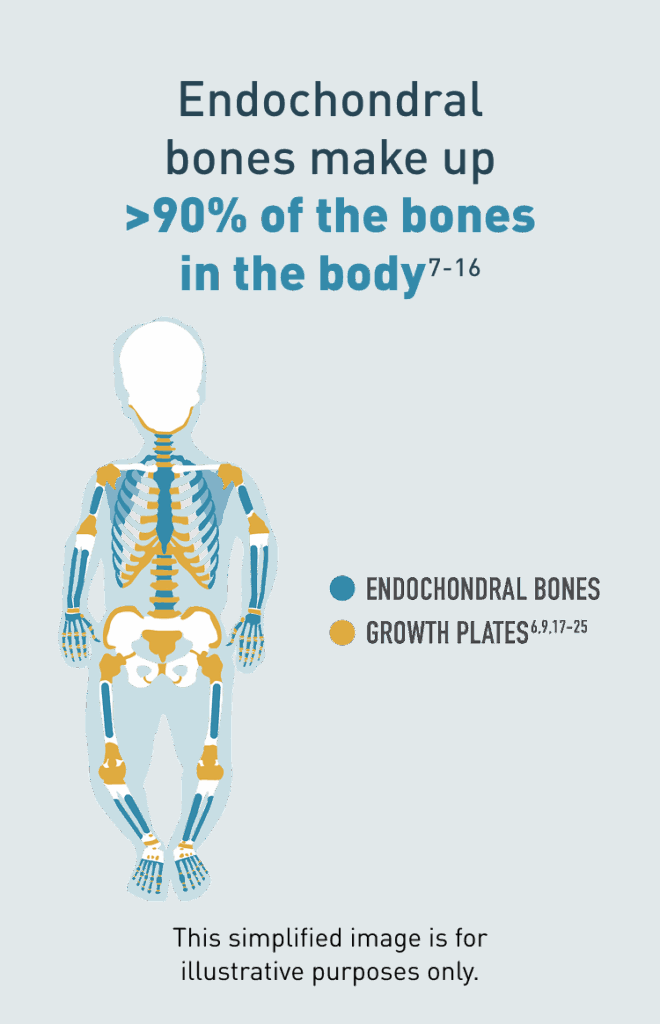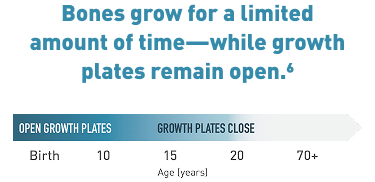
Inhibited bone growth can lead to multisystemic complications. See how you can impact your patients’ care.1-3
Learn about care and treatment for achondroplasia.4
Achondroplasia is a rare genetic condition in which endochondral bone growth, the process of replacing cartilage with bone, is inhibited at the growth plates.1,3,5,6
1 in 25,000 people are born with achondroplasia.5




Inhibited bone growth can lead to progressive, multisystemic complications that can impact daily functioning and quality of life. These need to be proactively monitored from birth and throughout adulthood.1-3,26,27
You play an important role in initiating multidisciplinary care.3,27
FORAMEN MAGNUM STENOSIS
May be associated with compression of the lower brain stem and higher mortality28-30
OBSTRUCTIVE SLEEP APNEA
Affects >50% of people with achondroplasia32
DENTAL ISSUES
Including misaligned teeth, a narrow palate, open bite, or underbite31,34
PSYCHOSOCIAL IMPACT
Negative self-perception can lead to poor self-esteem37
CHRONIC PAIN
Especially back pain, which can result in reduced mobility34
RECURRENT OTITIS MEDIA
Ear infections can affect up to 70% of people with achondroplasia, causing hearing issues or speech delays27,31
GENU VARUM (TIBIAL BOWING)
Can affect walking and running33
FUNCTIONAL CHALLENGES
Can affect mobility, independence, and daily activities35,36
SPINAL STENOSIS
Can lead to leg weakness, incontinence, and chronic pain, especially in the back34,38
OBESITY
Can lead to heart disease35,39
Proactive, early management is necessary for achondroplasia. Coordinated care is needed to provide optimal patient outcomes and to support their parents and caregivers.3,4,27,31,32,40

Help caregivers find a specialist in their area with our Achondroplasia Doctor Finder.
Locate other healthcare providers who have experience caring for children with achondroplasia.
Search results are not comprehensive and do not reflect any endorsement or certifications from BioMarin.
This directory is available for any healthcare provider who chooses to be listed and may not reflect all healthcare professionals in your area.
Take the next step and talk with a representative about care and treatment for your patients with achondroplasia.4
*Required fields